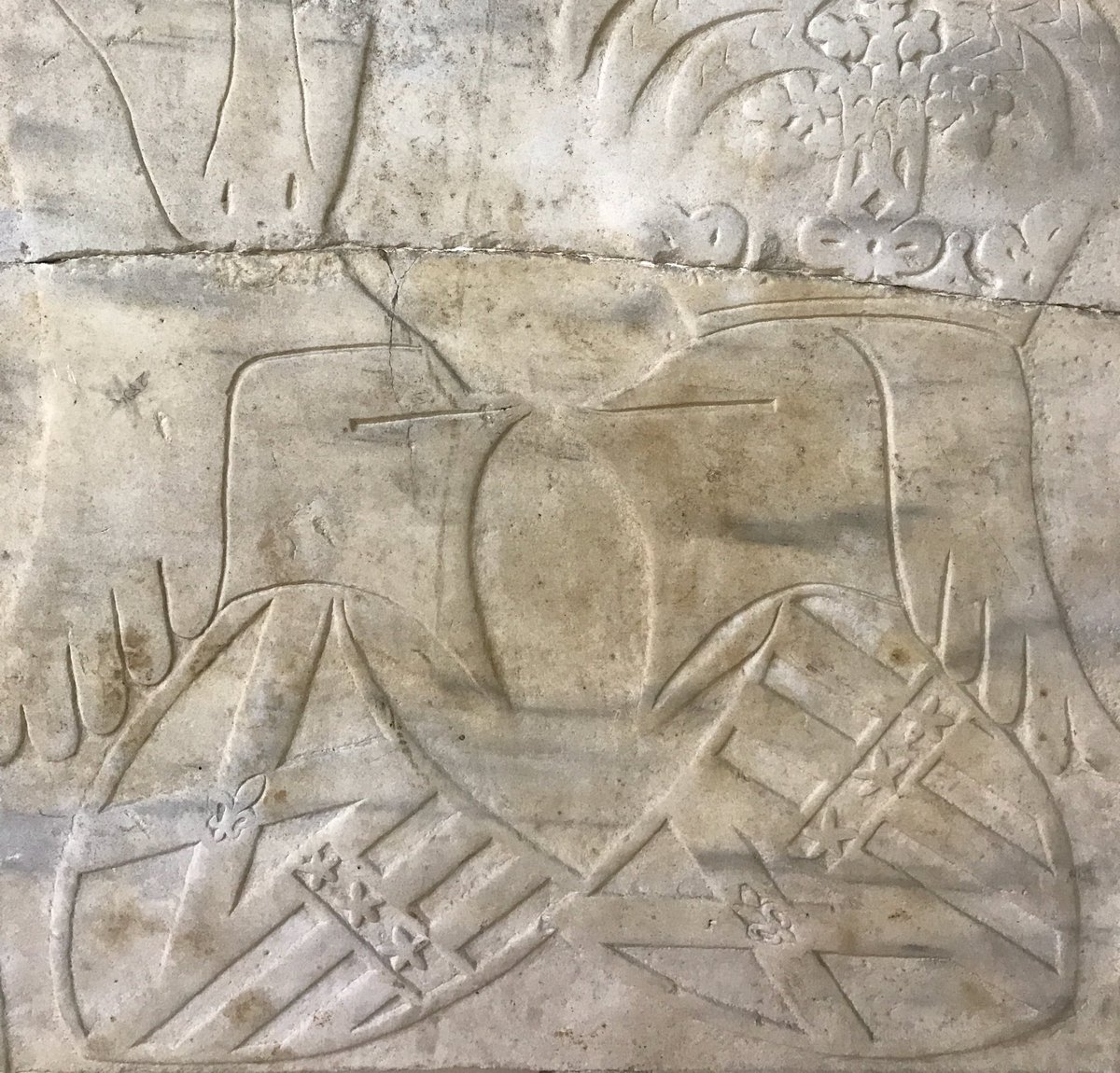

Partner John Clanvowe, buried together
Queer Places:
Nottingham Castle, Lenton Rd, Nottingham NG1 6EL, Regno Unito
 Sir
William Neville (c. 1338 - 19 October 1391) was the constable of
Nottingham castle. He was a crusader with his lollard brother,
John Clanvowe,
with whom he was buried inside the Arap Mosque in Istanbul. In the
Arap mosque of Istanbul two knights, Sir William Neville and Sir John
Clanvowe, are buried side by side in a joint tomb. On their headstone are
inscribed two helmets placed in such a position that they seem to be
kissing, while their shields overlap. Both men were well acquainted with
Chaucer and were no doubt part of the circle of ‘Lollard knights’ at the
court of Richard II in London. They had travelled far to engage in a
campaign by the Duke of Bourbon against Tunis. They would have been well
rewarded, but for the fact that Clanvowe died during the campaign; the
event, according to a monkish chronicle, provoked such ‘inconsolable
sorrow’ in Neville ‘that he never took food again and two days afterwards
breathed his last, greatly mourned in the same village’. In a treatise on
arms the herald gave the two knights the same arrangement of arms as a
married couple, which confirms the natural supposition that they were in
fact themselves married in some fashion.
Sir
William Neville (c. 1338 - 19 October 1391) was the constable of
Nottingham castle. He was a crusader with his lollard brother,
John Clanvowe,
with whom he was buried inside the Arap Mosque in Istanbul. In the
Arap mosque of Istanbul two knights, Sir William Neville and Sir John
Clanvowe, are buried side by side in a joint tomb. On their headstone are
inscribed two helmets placed in such a position that they seem to be
kissing, while their shields overlap. Both men were well acquainted with
Chaucer and were no doubt part of the circle of ‘Lollard knights’ at the
court of Richard II in London. They had travelled far to engage in a
campaign by the Duke of Bourbon against Tunis. They would have been well
rewarded, but for the fact that Clanvowe died during the campaign; the
event, according to a monkish chronicle, provoked such ‘inconsolable
sorrow’ in Neville ‘that he never took food again and two days afterwards
breathed his last, greatly mourned in the same village’. In a treatise on
arms the herald gave the two knights the same arrangement of arms as a
married couple, which confirms the natural supposition that they were in
fact themselves married in some fashion.
Sir William Neville was a knight of the chamber to King Richard II of England and was named constable of Nottingham castle. He was son of Ralph Neville, 2nd Baron Neville de Raby.[1]
Nottingham Castle
Nottingham historian Tony Scupham-Bilton has suggested that there is a gay undertone to the Robin Hood legend. The link with Robin Hood dates back 700 years and it is due to the relationship between Sir William Neville and Sir John Clanvowe. The two shared a special bond, despite the fact Sir William had a wife, firstly Elizabeth Le Waleys and secondly Alice de St. Philbert. Clanvowe, a poet, wrote a ballad in honor of a visit of King Richard II to Nottingham castle, "The Jest of Robin Hood". According to Scupham-Bilton, the background of the ballad was Clanvowe's own relationship with Neville. The two of them had a ceremony of "wedded brotherhood". Neville and Clanvowe died on pilgrimage near Constantinople, Neville two days later than Clanvowe.[2]
In an entry for 1391 in the chronicle compiled in the XIV century by the monks of Westminster Abbey, it is written that William Neville died of grief for the death of John Clanvowe: "It was also on October 17, that in a village near Constantinopole in Greece the life of Sir John Clanvowe, a distinguished knight, came to its close, causing to his companion on the march, Sir William Neville, for whom his love was no less than for himself, such inconsolable sorrow that he never took food again and two days afterward breathed his last, greatly mourned, in the same village. These two knights were men of high repute among the English, gentlemen of mettle and descended from illustrious families."[1]
Their tombstone was sculpted with two helms kissing each others, and was discovered in 1913 inside the Arap Mosque. It is now preserved at the İstanbul Archaeology Museums.[2]
My published books: